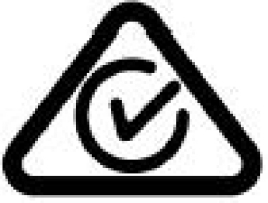Certification project: Australian C-tick certification

Electronic and electrical products entering Australia should have an EMC mark, also known as the c-tick mark, in addition to safety labels. The purpose is to protect the resources of the radio communication frequency band, and its implementation system is somewhat similar to the EMC directive in Europe Therefore, self declaration can be made by the manufacturer/importer. However, before applying for the C-tick logo, testing must be conducted according to relevant CISPR standards. And the report must be endorsed and submitted by the Australian importer. The Australian Commission Authority (ACA) uniformly accepts and issues registration numbers.
Basic Introduction to C-tick Certification
In Australia, the EMC requirements for electrical products are monitored by the Australian Communications Authority (ACA). In addition to the Australian and New Zealand standards (AS/NZS), In 2002, ACA recognized 103 other standards, including EN, IEC and CISPR.
In order to limit the impact of electromagnetic interference, Australia has implemented mandatory requirements for electromagnetic interference (EMI) on all products within the standard range since January 1999. Some EMC experimental projects must also comply with mandatory requirements, including conducted interference, intermittent interference (clicking sound), and radiated interference. Other EMC projects are not mandatory requirements. Only products that meet relevant standards after inspection can be labeled with the C-Tick logo. Any company or individual who wants to use this logo must apply to the government regulatory department and obtain written approval before use, and the height of the logo must not be less than 3 millimeters.
C-tick authentication information identification
The information of the Australian supplier must be marked next to the C-Tick mark according to regulations, so that ACA can effectively trace the supplier responsible for the EMC of the product during product sampling in the market. The identification of information includes four aspects:
1. The registered name and address of the Australian supplier.
2. Australian Company Number
3. The number issued by ACA to Australian suppliers.
4. The Australian registered trademark used in the Australian market for the product.
C-tick certified product division
The EMC system in Australia divides products into three levels, and suppliers must register with ACA and apply for the use of the C-Tick logo before selling Level 2 and Level 3 products.
Level 1 product
Level 1 products refer to products with low interference radiation to devices using wireless spectrum, such as manual switches, simple relays, unidirectional squirrel cage inductive motors, resistors, etc. For Level 1 products, suppliers must sign a conformity declaration and provide a product description. Level 1 products can voluntarily apply for the C-Tick logo, but suppliers who choose to use the logo must provide a conformity declaration and product description, as well as conformity records, to prove that the products described in the declaration have met relevant EMC standards. The testing location is not required and internal testing is allowed.
Level 2 product
Level 2 products refer to products that have high interference radiation on devices using wireless spectrum, such as switching power supplies, welding machines, dimmers, most household appliances, etc. In addition to signing a conformity declaration and providing a product description, suppliers must also provide testing reports conducted in accordance with relevant standards. If there are no relevant standards, technical structure documents need to be provided. The testing location is not required, and internal testing is allowed.
Level 3 products
Level three products refer to products that have extremely high interference radiation to devices using wireless spectrum, namely products covered by CISPR11 and CISPR22. At present, communication terminal products are still included in this scope, but starting from November 7, 2003, terminal products will be classified as Level 2 products. In addition to signing a conformity declaration and providing a product description, suppliers must also provide a test report issued by an accredited testing agency. At the same time, a quality management system certificate issued by a QSM certification body should also be issued.
Phone:002348038218556
Address:68, TINUBU STR, ITA-EKO ABEOKUTA, OGUN STATE, NIGERIA